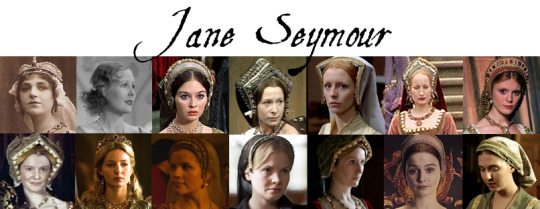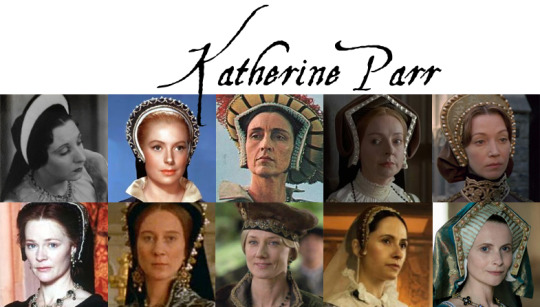Text
youtube
#alone in the dark#resident evil#sweet#home#doctor#hauzer#sweet home#doctor hauzer#game#gra#gaming#video essay#polska#Youtube
1 note
·
View note
Text
Zapraszam!
youtube
#polska#polish#youtube#video#essay#silent hill 2#Maria#Mary Sunderland#James Sunderland#Youtube#tumblr#aesthetic#original#tumblrpost#monik911hsm#video games#horror#psychological#survival
2 notes
·
View notes
Photo
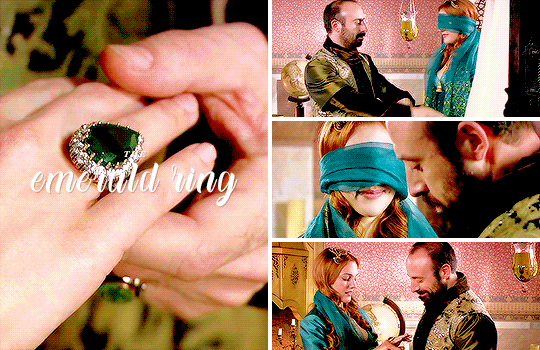

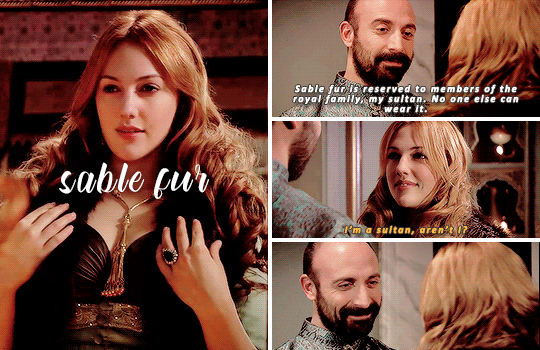
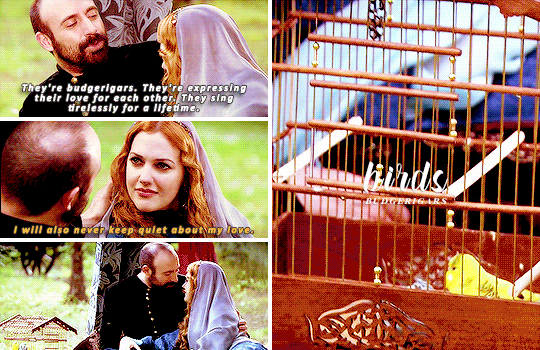





Süleyman’s gifts to Hürrem – requested by @sultanaorqueen
942 notes
·
View notes
Photo
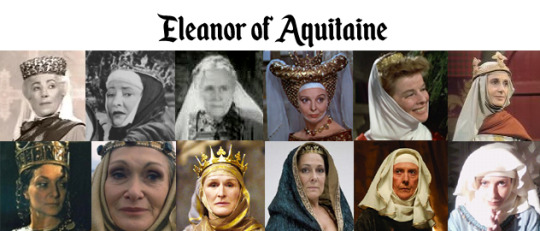





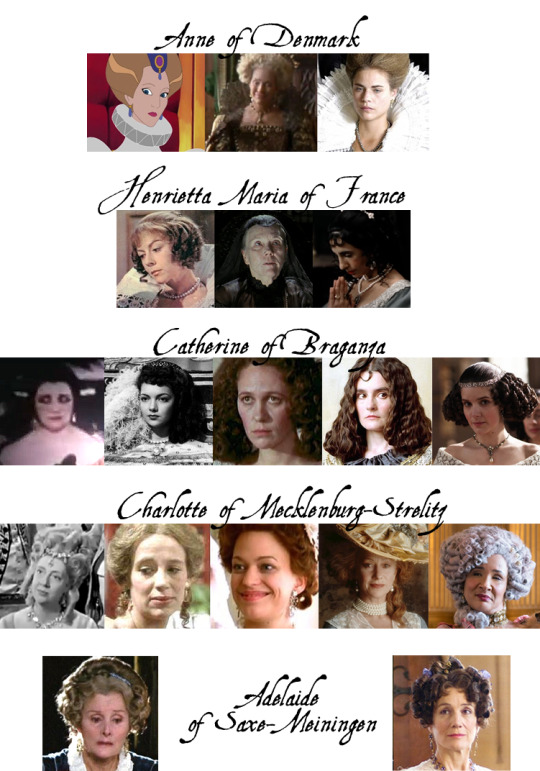
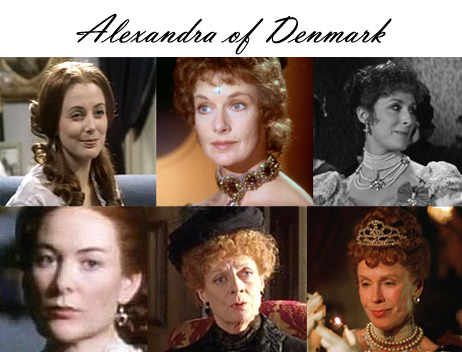
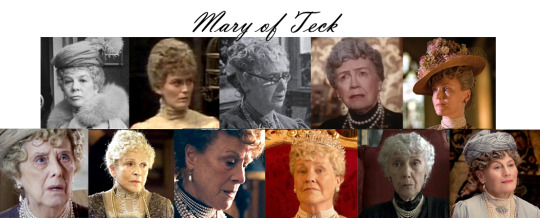

The Queen Consorts of England (minus Henry VIII’s wives) in Film and TV
(No appearances: Matilda of Flanders, Matilda of Scotland, Adeliza of Louvain, Matilda of Boulogne, Eleanor of Provence, Eleanor of Castile, Margaret of France, Anne of Bohemia, Joan of Navarre, Mary of Modena, Caroline of Ansbach, Caroline of Brunswick)
Henry’s wives
Czytaj dalej
237 notes
·
View notes
Photo
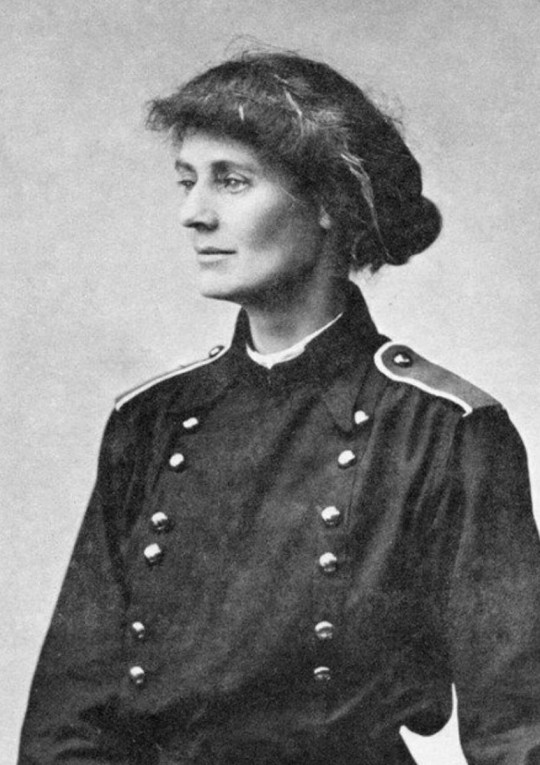
Constance Markievicz - Rebel countess
Constance Markievicz, née Gore-Booth, (1868-1927), was born in London, though her family owned an estate in County Sligo, Ireland. Instead of being a well-to-do lady, Constance wanted to become an artist and left for Paris. There she met a destitute Polish count, Casimir Dunin Markievicz and married him. She gave birth to a daughter in 1901. In 1903, the family settled in Dublin, where Constance helped establish the United Arts Club, but the couple soon became estranged.
By 1907, Constance started to fight for women’s rights. In 1908, she co-founded a scouting organization and trained young people to fight for the nationalist cause. In 1913, she joined the Irish Citizen Army, a group created to protect demonstrators from the police during the 1913 Lockout. Constance also borrowed money and sold her jewelry to feed the starving protesters.
In 1915, she advised women who wanted to be involved in the cause to:
“Dress suitably in short skirts and strong boots, leave your jewels and gold wands in the bank, and buy a revolver. Don’t trust your “feminine charm” and your capacity for getting the soft side of men, but take up your responsibilities and be prepared to go your own way depending for safety on your own courage, your own truth and your own common sense, and not on the problematic chivalry of the men you may meet on the way”.
Constance fought during the 1916 Easter rising, an Irish nationalist and republican rebellion. She was second-in-command of the forces at St. Stephen Green and one of the only two female officers in the Irish Citizen Army. Fourteen other women fought actively among the rebels. Among the insurgents, Constance and Margaret Skinnider were reportedly the best snipers among the insurgents. Constance wore trousers and carried a gun. She wrote about her part in the fight:
“This work was very exciting when the fighting began. I continued round and round the Green, reporting back anything that was wanted, or tackling any sniper that was particularly objectionable”.
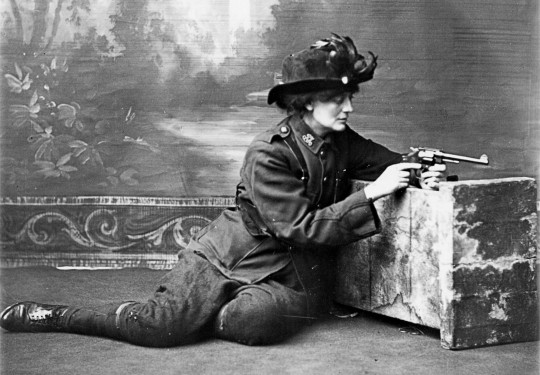
The rebels were forced to surrender after six days. Constance refused at first, but had to give up. She kissed her revolver before handling it to her foes. On may 4, she was tried and sentenced to be executed, but her sentence was commuted to life imprisonment on behalf of her sex. When learning of the verdict she said: “I do wish your lot had the decency to shoot me”.
She was, however, released in 1917 and became the first woman elected to the parliament, in Britain and Ireland and later, as minister of Labour, the second female cabinet minister anywhere in the world.
She fought again during the 1922-1923 Irish civil war. A rifleman who fought by her side gave the following account:
“It made my position in the shelter of the cornice as dangerous a one as you could find. I was due for relief and I wasn’t sorry for that. But when my relief came, who was it but Madame (Constance) (…) I didn’t like the idea of a woman taking over that position. But Madame just waved me to one side with that imperious air she could put when she wanted to have her own way. She slipped into what little shelter there was, carrying with her an automatic Parabellum Pistol (…). I couldn’t rightly say how long she was up there, for I was so tired that I drowsed off to sleep. But when I woke up, the first thing I noticed was something different in the sound of the firing. The steady, continuous rattle of fire that I learned to pick out from the sound of rifle and machine gun fire up and down the street had ceased; the sniper’s post in Henry Street was silent”.
Constance died in 1927, at the age of 59, officially from appendicitis. By then, she had given almost all her fortune to the poor. She received official funerals in Dublin.
Bibliography:
Banerjee Sikata, Muscular Nationalism: Gender, Violence, and Empire in India and Ireland, 1914-2004
“Constance Markievicz”, Women’s museum of Ireland
Cook Bernard, “Constance Markievicz”, in: Cook Bernard (ed.), Women and war: an historical encyclopedia from antiquity to the present
Naughton Lindie, Markievicz: A Most Outrageous Rebel
Sigillito Gina, The Daughters Of Maeve: 50 Irish Women Who Changed World
395 notes
·
View notes
Photo

Jason Anderson
British artist Jason Anderson creates colorful abstract paintings composed of pixelated swatches of pastel-toned oil paint. Up-close, the artist’s paintings look like blocky layers of shapes and color; but, from afar, his scenes—featuring cityscapes, roads, trains, and marinas—are revealed.


Anderson began his career as a stained glass apprentice, where he worked on restoring the windows of cathedrals. He soon progressed onto designing the glass murals himself, where he learned how to break down subject matter into “jigsaws” of colored sections. This approach still shines through in his paintings today—complex scenes are brought to life with simple shapes and careful consideration to hue and tone.







81K notes
·
View notes
Photo
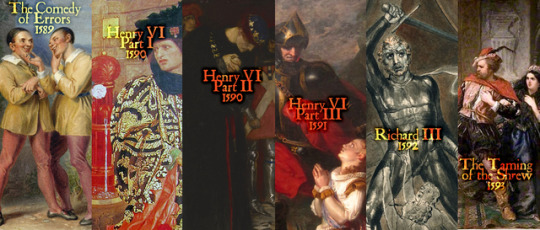

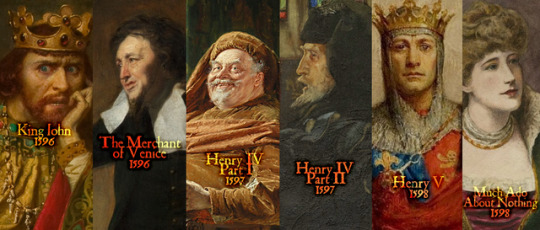


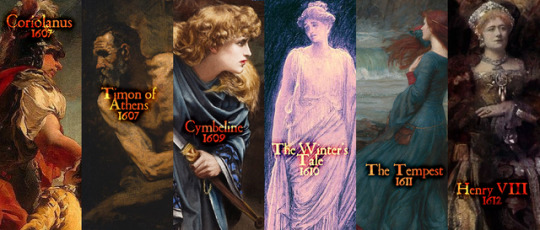
“The wheel has come full circle. I am here.”
– King Lear, Act V, Scene iii
William Shakespeare is believed to have both been born and died on this day (April 23) in 1564 and 1616, respectively. His astonishing body of work has become one of the most enduring legacies of England and its language.
1K notes
·
View notes
Photo
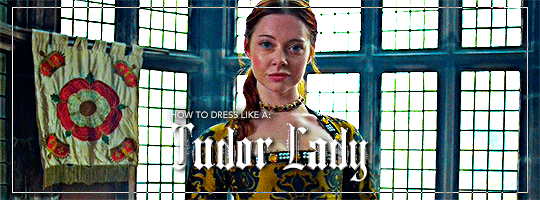

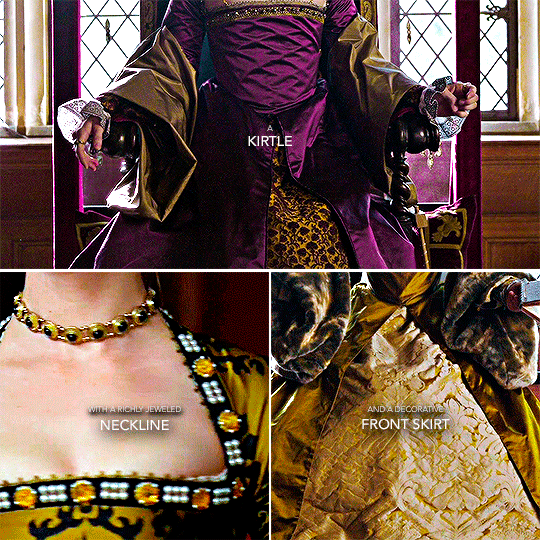
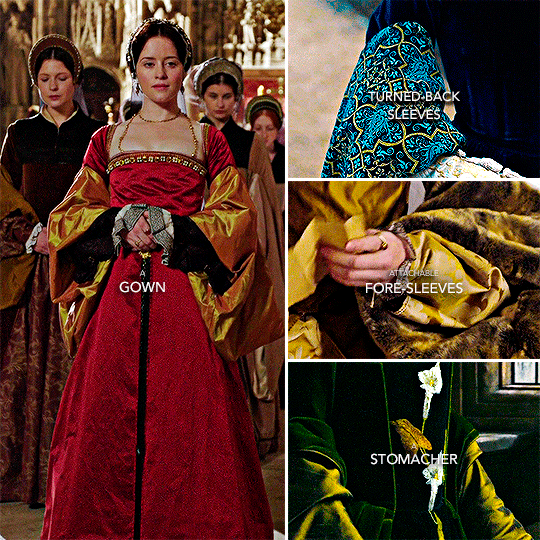


PERIOD DRAMA APPRECIATION WEEK 2022
↳ Day 3 - Favorite Costumes: The Tudor Lady’s Wardrobe
[insp.]
2K notes
·
View notes
Text
The Women of Hans Holbein Sketches

1. The sitter in the portrait is unknown, but it has been suspected to be of Amalia of Cleves, the sister of Anne of Cleves.
2. Elizabeth Audley, the wife of Thomas Audley, 1st Baron Audley of Walden
3. The sitter in the portrait is unknown, but it has been suspect to be of Anne Boleyn.
4. Alice Burgh, the wife of Thomas Burgh who was a part of the household of Prince Edward (later Edward VI).

5. Margaret Butts, a lady-in-waiting to Princess Mary (later Mary I).
6. Anne Cresarce, a ward of Thomas More.
7. Elizabeth Dauncey, a daughter of Thomas More.
8. Margaret, Marchioness of Dorset, a godmother to Princess Elizabeth (later Elizabeth I).
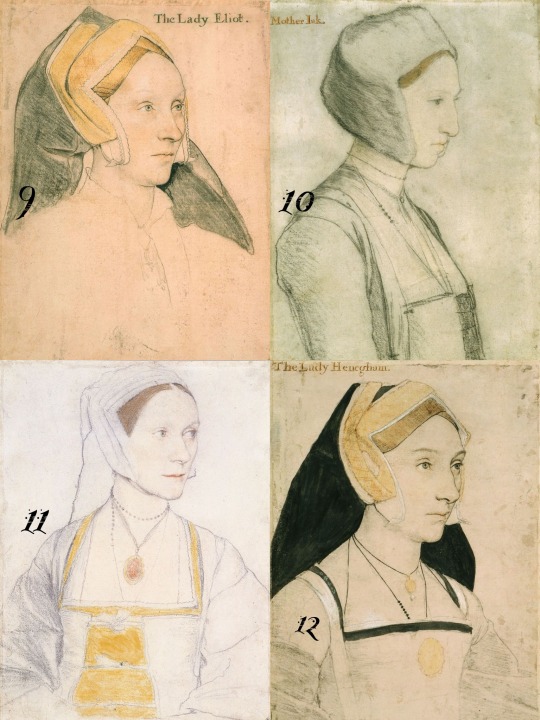
9. Margaret Elyot.
10. Margaret Giggs, a ward of Thomas More.
11. Cicely Heron, a daughter of Thomas More.
12. Mary Heveningham, a first cousin to Anne Boleyn and suspected mistress to Henry VIII.

13. Elizabeth Hoby, was a part of Katherine Parr’s inner circle.
14. The sitter in the portrait is unknown, but it has been suspected to be of Katherine Howard.
15. Frances, Countess of Surrey, the wife of Henry Howard, Earl of Surrey.
16. Mary, Duchess of Richmond and Somerset, the wife of Henry VIII’s illegitimate son Henry Fitzroy.
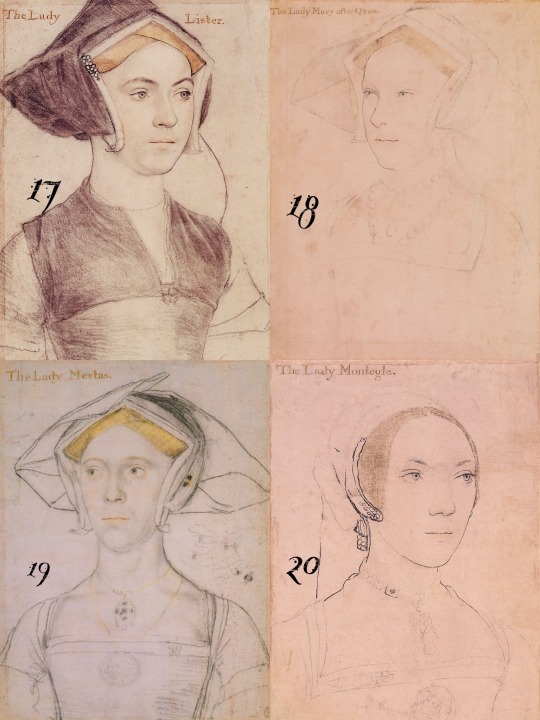
17. Probably of Jane Lister.
18. Princess Mary (later Mary I).
19. Joan Meautas, lady of the privy chamber to Jane Seymour.
20. Mary Monteagle, a daughter of Charles Brandon.

21. Formerly suspected to be of Jane Boleyn, but is now believed to be of Grace Parker.
22. Could be any of the three wives of Robert Radcliffe, 1st Earl of Sussex, but is probably his third wife Mary Arundell.
23. Elizabeth Rich, the wife of Richard Rich, 1st Baron Rich.
24. Jane Seymour.
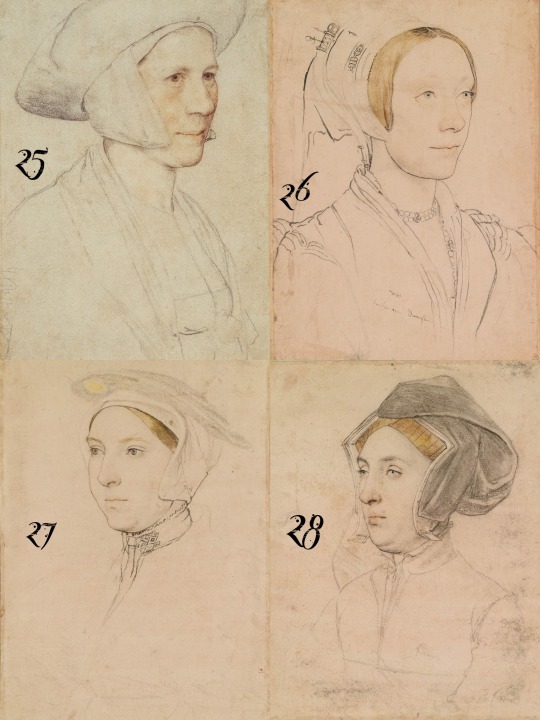
25. Unknown sitter.
26. Unknown sitter.
27. Unknown sitter.
28. Unknown sitter.
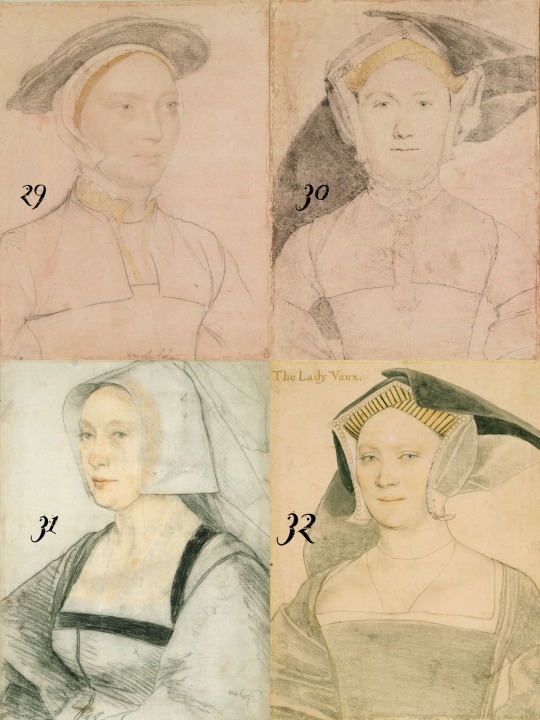
29. Unknown sitter, but has been suspected to be of Anne Herbert, the sister of Katherine Parr.
30. Unknown sitter.
31. Unknown sitter, but has been suspected to be of Maud Green, the mother of Katherine Parr.
32. Elizabeth Vaux, a first cousin to Katherine Parr.

33. Catherine Willoughby, the wife of Charles Brandon.
34. Mary Zouch, a lady-in-waiting to Jane Seymour.
35. Mary Guilford, the wife of Henry Guilford.
2K notes
·
View notes
Photo
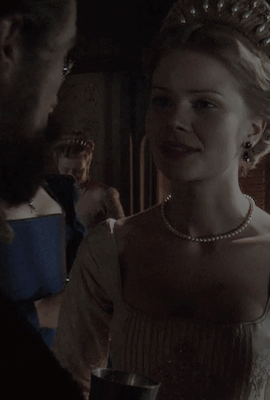
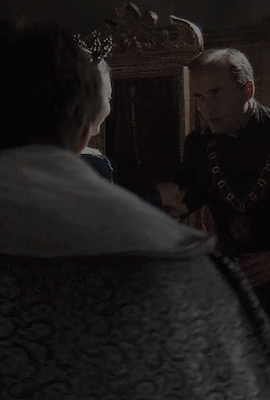
💎
#perioddramaedit#tudorsedit#anneboleynedit#ndormeredit#anne boleyn#Natalie Dormer#tvedit#the tudors#gif#my gif#by me#2.09
136 notes
·
View notes
Text
"lizzie?" whispered maggie anxiously. lizzie took a deep breath.
"come and sit with me, maggie."
"you look pensive. is everything alright?" asked maggie.
"i was thinking about the past." lizzie closed her eyes and smiled wretchedly. the cold air was burning her delicate skin but she was too painful for care it.
"i would like to hear it." maggie hesitantly said. her eyes turned to her beloved cousin, the queen.
"queen anne talked with me when she was dying... she said "try to be a good queen." and i tried but did i? did i become a good queen?" lizzie bit her lips, she was scaring that what is going to hear.
"of course, lizzie. you were always a good queen, and still you are."
"thank you, maggie." lizzie chuckled darkly and said. "it's been 14 years... it's seems so long ago but i still can feel his touch on my hair. isn't it weird? i cannot even remember his beautiful voice but i can remember his smell and his soft touches."
maggie understood that who was she is talking about; her dearest uncle king richard...
"he told me that i am the most beautiful girl in the entire world. and he called me his own heart, his golden heart." she chuckled and felt him in her side again.
"i am still dreaming of him. in my dreams, he came to me and says that he loves me." she sighed deeply. her heart always hurt whenever she mentioned him.
"ohh i miss him, maggie." lizzie said, she was nearly crying.
"lizzie don't..." maggie stand up and hugged her cousin.
"uncle richard wouldn't like to see you like that."
"he wouldn't like to die, neither maggie." her tears were falling down into her red cheeks.

8 notes
·
View notes
Photo




Anne Boleyn on Stage and Screen
Giuditta Pasta in the Teatro Carcano‘s production of the opera Anna Bolena (this was the original production of this opera and the title role was written specifically for her voice) — 1830
Apollonia Bertucca in the New York premiere of Anna Bolena — 1850
Violet Vanbrugh in the Lyecum Theatre’s production of Shakespeare’s Henry VIII — 1892
Clara Kimball Young in a short film about Cardinal Wolsey — 1912
Henny Porten in the film Anna Boleyn — 1920
Merle Oberon in the film The Private Life of Henry VIII — 1933
Vivien Leigh in the Open Air Theatre’s production of Shakespeare’s Henry VIII — 1936
Sara Scuderi in Gran Teatre del Liceu‘s production of Anna Bolena — 1947
Joyce Redman in the Broadway production of Anne of the Thousand Days — 1949
Elaine Stewart in the film Young Bess — 1953
Maria Callas in La Scala’s production of Anna Bolena — 1957
Gloria Davy in the American Opera Society’s production of Anna Bolena — 1957
Leyla Gencer in Anna Bolena — 1965
Vanessa Redgrave in the film A Man For All Seasons — 1966
Genevieve Bujold in the film Anne of the Thousand Days — 1969
Dorothy Tutin in the BBC miniseries The Six Wives of Henry VIII — 1970
Charlotte Rampling in the film Henry VIII and His Six Wives — 1972
Beverly Sills in the New York City Opera’s production of Anna Bolena - 1973
Marisa Galvany in the New York City Opera’s production of Anna Bolena — 1974
Barbara Kellerman in the BBC production of Shakespeare’s Henry VIII — 1979
Joan Sutherland in the San Francisco Opera’s production of Anna Bolena — 1984
Oona Kirsch in the film God’s Outlaw — 1986
Edita Gruberová in Anna Bolena — 1994
Julia Marsen in the documentary The Six Wives of Henry VIII — 2001
Jodhi May in the BBC TV movie The Other Boleyn Girl — 2003
Helena Bonham Carter in the ITV TV movie Henry VIII — 2003
An uncredited actress in the History Happened Here segment Henry VIII & Anne Boleyn — 2007
Mariella Devia in Anna Bolena — 2007
Natalie Dormer in the Showtime series The Tudors — 2007-2008, 2010
Natalie Portman in the film The Other Boleyn Girl — 2008
Karen Peakes in the Folger Theatre’s production of Shakespeare’s Henry VIII — 2010
Miranda Raison in Howard Brenton’s play Anne Boleyn — 2010
Hasmik Papian in the Dallas Opera’s production of Anna Bolena — 2010
Miranda Raison in the Globe Theatre’s production of Shakespeare’s Henry VIII — 2010
Anna Netrebko in the Vienna State Opera’s and Metropolitan Opera’s productions of Anna Bolena — 2011
Emma Connell in the documentary Henry & Anne: The Lovers Who Changed History — 2011
Keri Alkema in the Minnesota Opera’s production of Anna Bolena — 2012
Jo Herbert in the UK tour of Howard Brenton’s Anne Boleyn — 2012
Rochelle Hart in the Opera Seria UK’s production of Anna Bolena — 2012
Anna Jullienne in the Auckland Theatre Company’s production of Howard Brenton’s Anne Boleyn — 2013
Serena Farncocchia in the Welsh National Opera’s production of Anna Bolena — 2013
Fleur Keith in the play Fallen in Love: The Secret Heart of Anne Boleyn performed at the Tower of London — 2013
Tara Breathnach in the documentary The Last Days of Anne Boleyn — 2013
Kathryn Myles in the Actors Shakespeare Project’s production of Shakespeare’s Henry VIII — 2013-2014
Miou Kazune in the Japanese musical Lady Bess — 2014-2017
Sondra Radvanovsky in several productions of Anna Bolena including at The Lyric Opera of Chicago and the Metropolitan Opera, among others — 2014-2015
Claire Foy in the BBC miniseries Wolf Hall — 2015
Harriet Green in the documentary Inside the Court of Henry VIII — 2015
Lydia Leonard in both the West End and Broadway productions of Wolf Hall Parts One & Two — 2015
Claire Cooper in the documentary Six Wives with Lucy Worsley (also known as Secrets of the Six Wives) — 2016
Fleur Keith in the short film I Am Henry — 2016
Harriet Green in the documentary The Six Queens of Henry VIII (also known as Henry VIII and His Six Wives) — 2016; Archive footage of Green in this documentary was also featured in the documentary series Elizabeth I — 2017
Krystin Pellerin in the CW series Reign, season 3 episode “To the Death” — 2016
Gemma Whalen in an episode of the CBBC series Horrible Histories — 2017
Ashleigh Weir in the Edinburgh Fringe Festival production of the musical Six — 2017
Christina Modestou in the Off-West End production of Six — 2017
Millie O’Connell in the original West End production of Six — 2018-2019
Angela Meade in several productions of Anna Bolena throughout the years, most recently in ABAO Bilbao’s production — 2019
Hazel Karooma-Brooker in the Norwegian Cruise Line production of Six — 2019
An uncredited actress in the Starz series The Spanish Princess, season 1 episode “All Is Lost” — 2019
Andrea Macasaet in the North American tour and original Broadway productions of Six — 2019-2020
Courtney Bowman in the West End production of Six — 2019-2020
Maddison Bulleyment in the UK tour of Six — 2019-2020
Kala Gare in the Australian tour of Six — 2020
Alice Nokes in The Spanish Princess part 2 — 2020
100 notes
·
View notes
Text
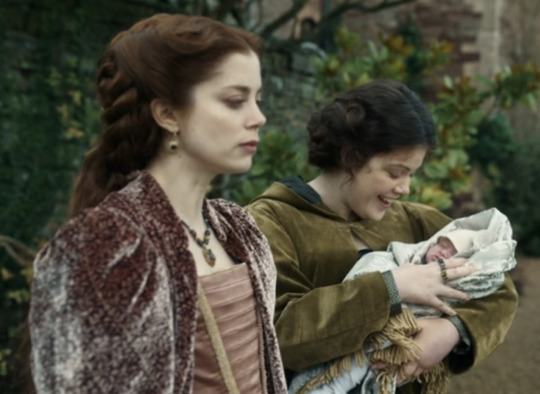

Isn’t she just delightful?
Catherine of Aragon has one of the more fascinating media legacies of anyone in the Tudor period, not in terms of how her image has fluctuated over the years, but because of how notably it hasn’t. Other hardcore Catholics of the Henrician court are inevitably vilified in stories from Protestant perspectives - Thomas More, Cardinal Wolsey, Jane Seymour and above all else Mary I, to name a few. “Protestant perspectives” doesn’t just refer to reformation texts, it includes books from the perspective of Protestant figures; usually Anne Boleyn or Elizabeth I, and more recently Thomas Cromwell with Hilary Mantel’s Wolf Hall books. Despite her unwavering faith in both the Catholic Church and her own position, Catherine’s reputation has, up until the past twenty years or so, remained close to stellar; her marriage into the English monarchy at a young age did well to divorce her from her parent’s religious persecutions, and her death some fifteen years or so before her daughter took the throne kept her from being tarnished by association to Mary’s resurrection of medieval heresy laws.
Czytaj dalej
95 notes
·
View notes
Photo
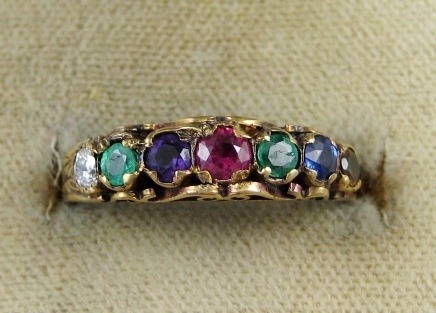

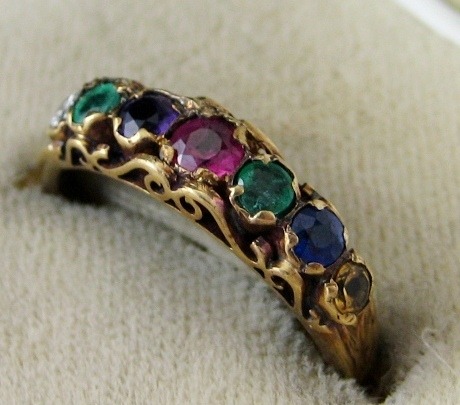
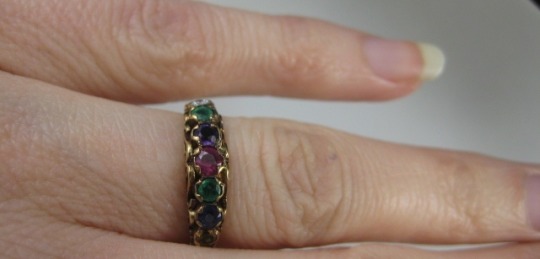
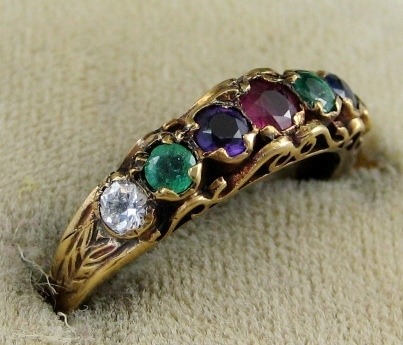
A Georgia era, early 19th century, ‘Dearest’ ring, the first letter of each stone represents a letter in the word ‘dearest’
Diamond -D
Emerald - E
Amethyst - A
Ruby - R
Emerald - E
Sapphire - S
Topaz - T
21K notes
·
View notes
Text
The Remnants of Anne Boleyn
After Anne Boleyn’s execution, Henry VIII made it a priority to erase every memory of her. Many believe he even had her portraits and trial records destroyed, which does seem very likely. We know for a fact that he had her badges and arms removed from every building... well, kind of. Fortunately for us, the men who were removing them either missed some or were just too lazy. Here are some symbols of Anne Boleyn that remain to this day:

Henry VIII and Anne Boleyn’s initials intertwined at King’s College Chaple.
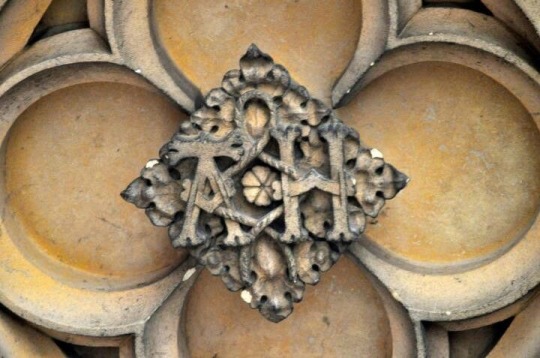
Henry VIII and Anne Boleyn’s initials intertwined at Hampton Court Palace underneath the clock tower.

A different version of Henry VIII and Anne Boleyn’s initials intertwined at Hampton Court Palace.

Anne Boleyn’s falcon badge carved into the wall of the main chamber at the Tower of London. It is believed this was made during her fall by a man who wanted to honor her memory, and the rough design indicates he didn’t have much time to make it.
1K notes
·
View notes
Photo

James I Presentation Armour
This armour was given to James I as a diplomatic gift from Tokugawa Hidetada of Japan in 1613. It was brought back from Japan to England by Captain John Saris of the East India Company and had been designed by the armourer Iwai Yozaemon of Nara in about 1610. The armour has been on display in the Tower of London since 1662, although it was wrongly labelled for several centuries.
444 notes
·
View notes


